#Plaza Condesa
Text



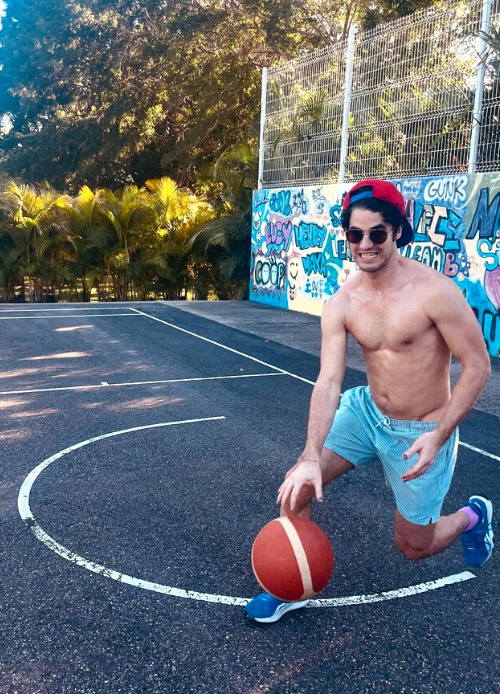
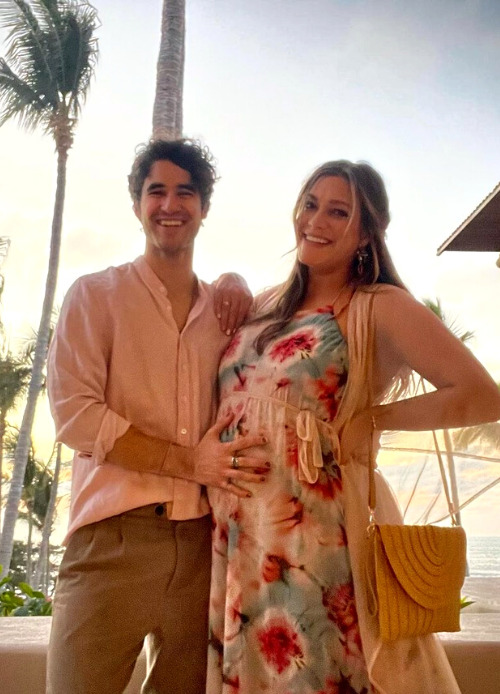
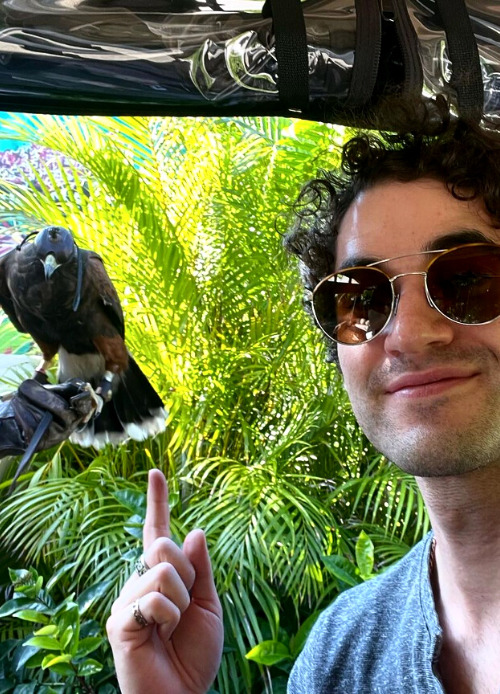
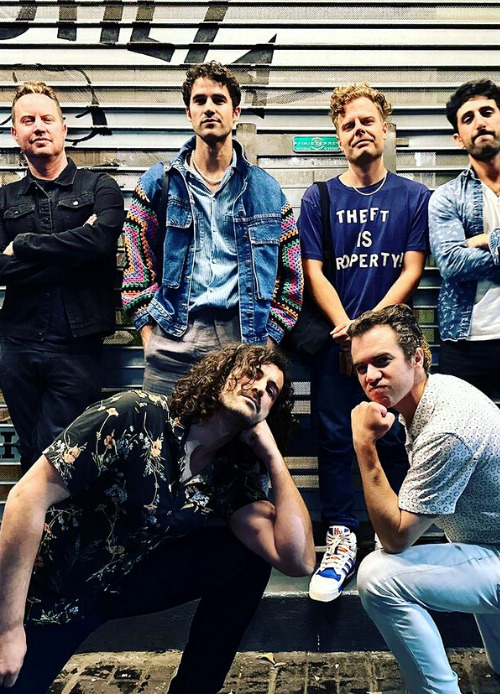


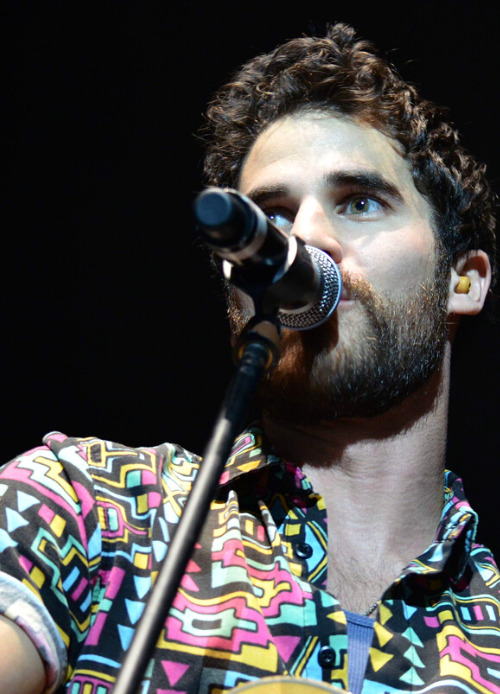

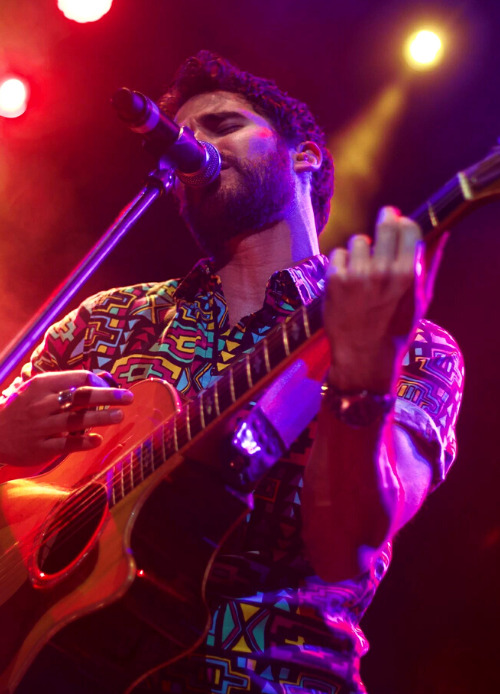

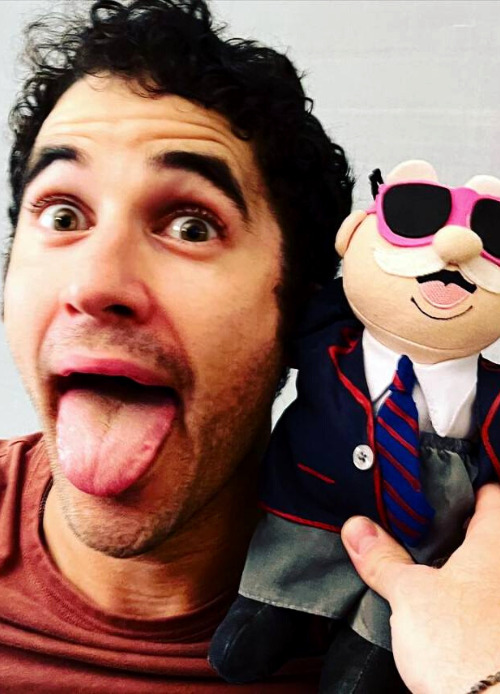
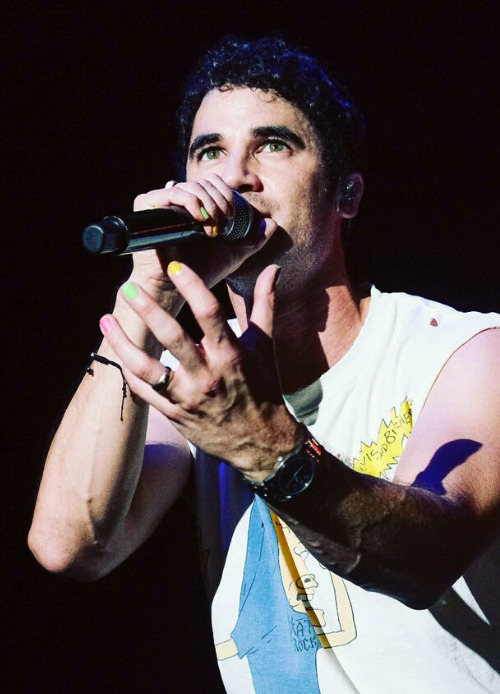


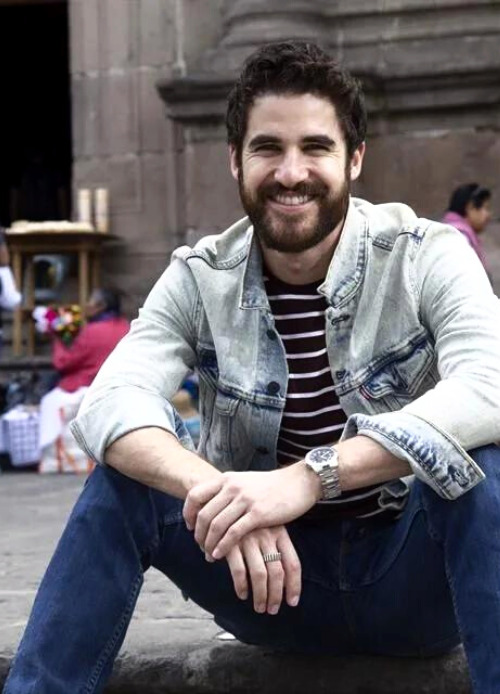
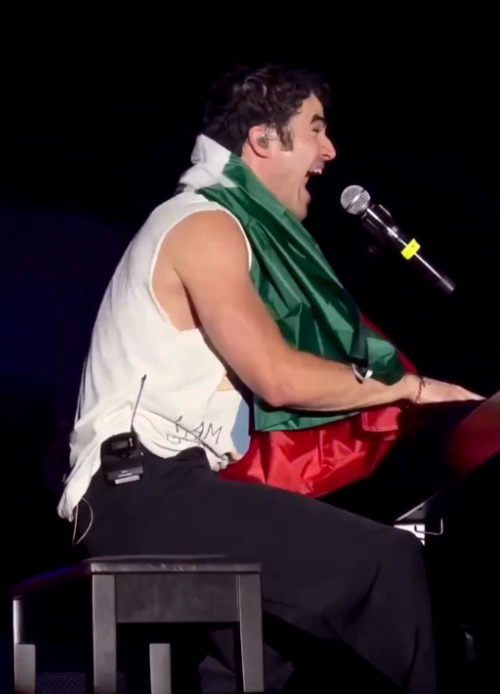

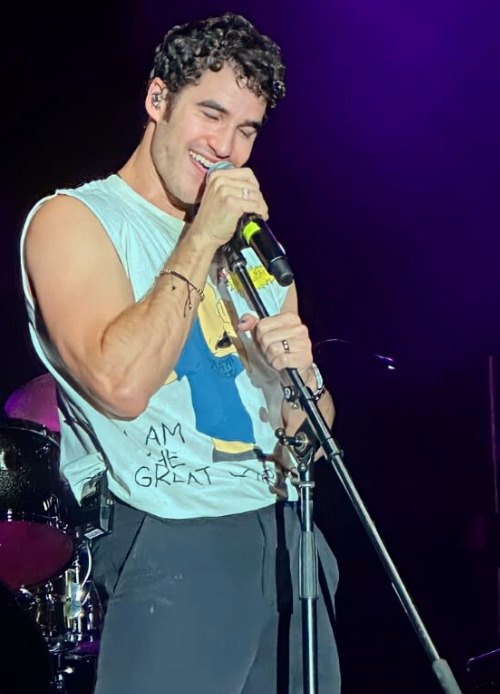
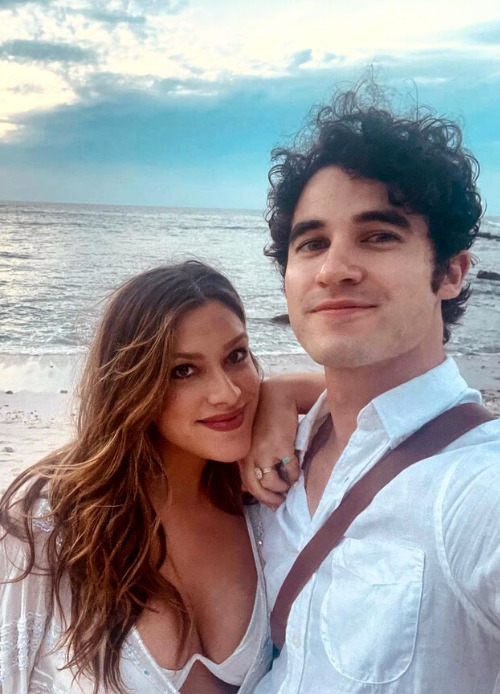
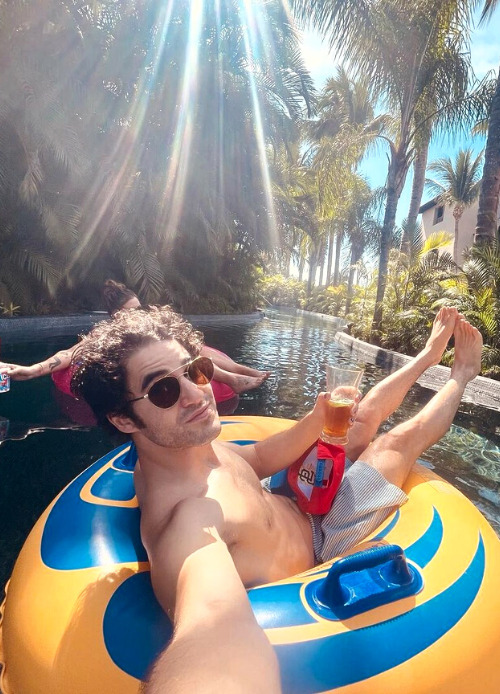
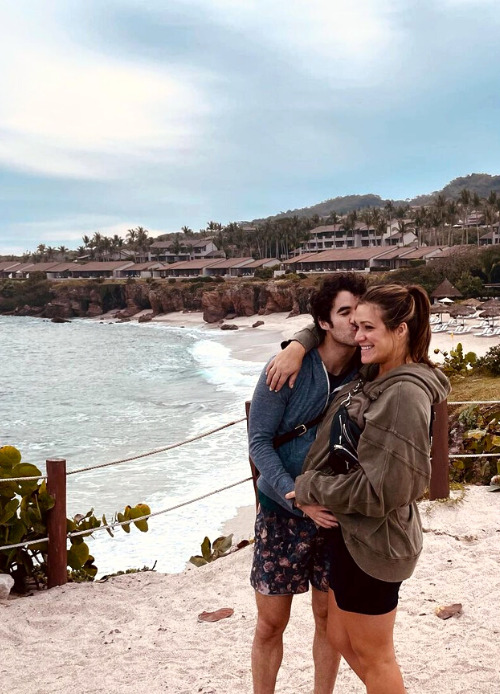


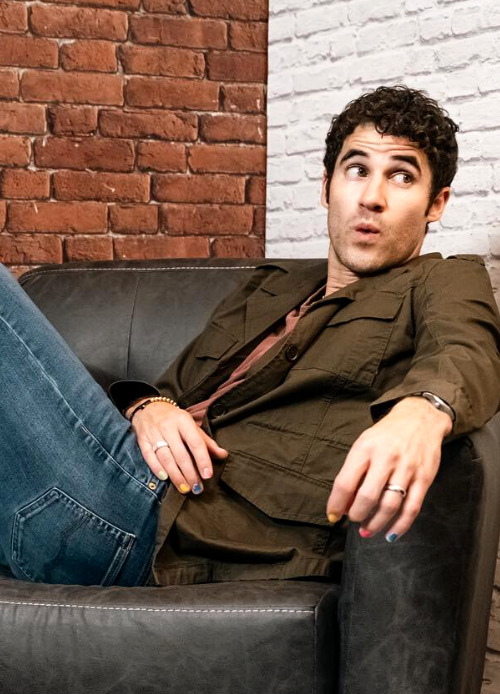

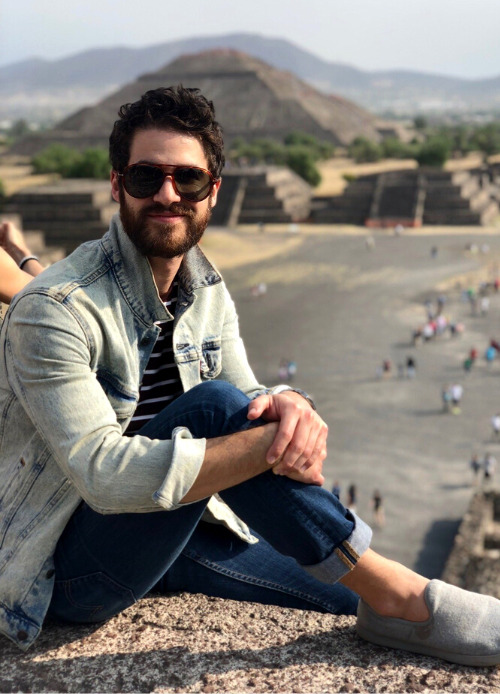

Darren Criss + México🇲🇽
#darren criss#mia criss#mia swier#darren plus#darren in mexico#🇲🇽#darren criss @ plaza condesa#darren criss @ frontón méxico#reforma gente photoshoot#frontón méxico photoshoot#baby moon#mexico city#march 2018#punta mita#teotihuacan#arms💪#🇲🇽🎉。+. ݁ ˖*。#really#long post#had to take advantage of the 30 image limit on web#cuz there are a lot of pics#mancandykings#q#please do not repost
26 notes
·
View notes
Text







Miles Kane El Plaza Condesa, Mexico
24/03/2019
+
49 notes
·
View notes
Text
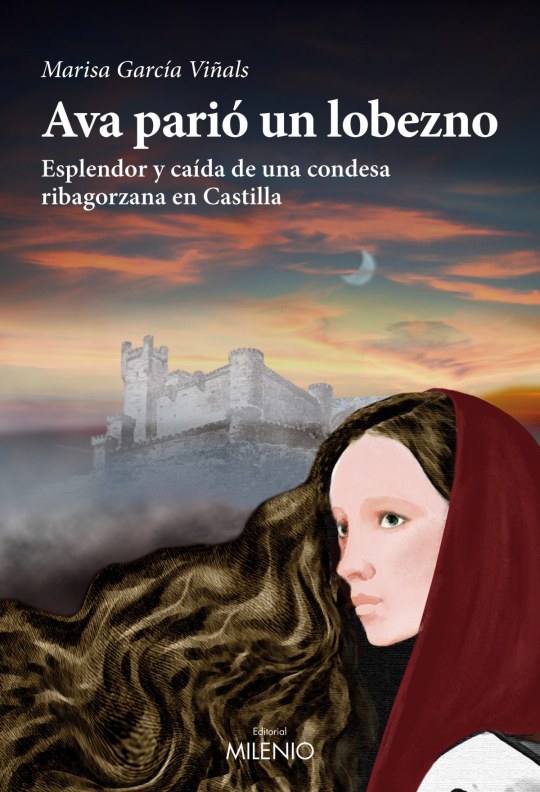
Año de gracia de 1034. El juglar Cardelle de Albelda recorre plazas y mercados contando la leyenda de la Condesa Traidora, Ava de Ribagorza, casada con el conde García Fernández de Castilla. Pero una misteriosa dama se cruza en su camino, poniéndole en un brete. En sucesivos encuentros y desencuentros, la dama y el juglar se enzarzan en jugosas disputas para esclarecer los hechos. Ampliamente documentada y con mordaces diálogos que abordan al lector, Ava parió un lobezno es una apasionante aventura que nos zambulle en la historia de Castilla, al tiempo que establece puentes de diálogo con la realidad, aquí y ahora, en una época en que las ambiciones políticas obedecen a varón y pocas, muy pocas, a mujer.
Marisa García Viñals (La Seu d'Urgell, Lleida) maestra, historiadora del arte, conferenciante y columnista de opinión en el diario La Mañana de Lleida. Ha publicado: Les pintures murals de la crucifixión de la Seu Vella de Lleida, 1992; Igualtat d'oportunitats noies i nois, 1997; Estanislao, l'art vesteix les formes, 2002; Voces tras las sombras, 2007; Acibella y Rabasón, los amantes de Benasque, 2009.
3 notes
·
View notes
Text
Ventura, nueva tarde de rotundidad en Requena, a hombros con el futuro de Bruno Gimeno
El rejoneador Diego Ventura, Román y el novillero sin caballos Bruno Gimeno hacían el paseíllo, este 31 de agosto, en el coso valenciano de Requena para lidiar un encierro con toros de Murube y erales La Condesa. FICHA DEL FESTEJO Plaza de toros de Requena (Valencia). Corrida mixta. Toros de Murube y erales La Condesa. …
La entrada Ventura, nueva tarde de rotundidad en Requena, a hombros con el…
0 notes
Text
youtube
2015 - Con altas expectativas, Vaya Futuro se establece como una de las bandas mas importantes del sonido indie nacional. Su disco, Perro Verde y Triste fue presentado con bombo y platillo con difusión de respetados medios como Warp y alternaron con gigantes de la talla de Los Planetas en el Plaza Condesa.
0 notes
Text
Por cierto..visite AVILES donde se caso y vive la MEXICANA ROCIO MEDELLIN BLANCO teniendo un hijo llamado RODRIGO [=REY de la RECONQUISTA]..cuando mi madre llevaba 24 hrs inconsciente y sola tras el ICTUS que le dio cuando llegue a la plaza de la GESTA de OVIEDO donde comi junto al auditorio PRINCIPE FELIPE..no siendo rescatada hasta al siguiente que subí al CRISTO DEL NARANJO al que se accede por la avenida de los MONUMENTOS donde está al principio el PUTICLUB "PRIVATE" y luego la iglesia ROMANICA SANTA MARIA DEL NARANCO que iba a ver cuando baje del CRISTO pero al aparcar la HARLEY en cuesta e ir en pantalón corto me queme con tuvo de escape y fui a una farmacia junto al Estadio del OVIEDO y el parque JUAN MATA [=John kills] que aunque solo jugo en INFANTILES en el OVIEDO y nació en BURGOS le dedican un parque..
..y en AVILES visite su famoso cementerio de LA CARRIONA que tiene la tumba más bonita de ESPAÑA o la de la CONDESA DE SAN JUAN DE NIEVA con un ANGEL hermafrodita con TROMPETA y al salir vi valla publicitaria con QUE ES LA VERDAD? Jesús dijo: Yo soy el camino, la verdad y la vida
























0 notes
Text

You will be enthralled by Buenos Aires from the moment you arrive. This expansive capital city of South America is so colorful and opulent that it almost looks like Paris, I thought. or Madrid, or Mexico City.
But wait until you see Buenos Aires' abundance of interesting activities. You are going to love the amazing food, amazing culture, and exceptional value!
Tango performances aside, there are other reasons to visit Buenos Aires: the city's top-notch art museums, amazing live music, and art and culture in general. It is a culinary destination as well; steak is the specialty, of course, but there are also alfajores, empanadas, and a thriving international food scene.
Furthermore, Buenos Aires is a fun city with lots of interesting and quirky bars, late-night dance clubs, and exciting live events. Buenos Aires is among the best-value major cities in the world due to its abundance of affordable options and surprisingly low prices.
I went to Buenos Aires for the first time on my own when I was twenty-four years old, and I recently went back for a longer visit over fifteen years later. Has the city undergone changes? Has it ever happened? I have also changed.
I cannot wait to tell you about the top activities in Buenos Aires. Come with me as we examine!
Contributors to this post include Dale Peterson and Adventurous Kate. It was published in March of 2024.
Buenos Aires is so much more than this picture suggests! through Shutterstock.
Activities in Buenos Aires
Examine Buenos Aires's Various Neighborhoods
Discovering each of the many neighborhoods in Buenos Aires is one of my favorite things to do while visiting the city. You could visit every neighborhood in Buenos Aires for months and still not see them all.
One of the best ways to explore lots of neighborhoods is to take the hop-on, hop-off bus tour. From above, you will be able to see all the best locations in the city and have a comprehensive overview of everything.
However, if you’re short on time, this private walking tour takes you to several of the city’s best neighborhoods in one day.
These are the top neighborhoods in Buenos Aires that I suggest you prioritize if you have more time to spend there:
Palermo
Palermo is a trendy, upscale neighborhood with some of the best restaurants, bars, and clubs in the city. It’s actually a huge neighborhood divided into sub-neighborhoods (including Palermo Chico, Palermo Soho, and Palermo Hollywood.)
If you’re familiar with the neighborhoods of Mexico City, you’ll understand what I mean when I say that Palermo reminds me a lot of Roma Norte and La Condesa. In New York, Palermo would be a massive East Village.
Palermo is home to many of my favorite restaurants in Buenos Aires, including Sacro (vegan), Don Julio (steakhouse), Mishiguene (Jewish Argentine cuisine), and La Carnicería (Argentine meat).
In Palermo Soho, you’ll find many of the coolest spots in the city concentrated around the lively Plaza Serrano. In Palermo Chico, the oldest part of the neighborhood, you can explore some of the city’s best museums, like the Museo de Arte Latinoamericano de Buenos Aires (MALBA).
To learn more about Palermo, check out this graffiti and street art walking tour. Accompanied by a local guide, you’ll learn about Palermo’s history and the political origins of its street art. Keep an eye out for Conan O’Brien’s mural with Lionel Messi and Pope Francis—it cracked me up!
El Caminito in La Boca, via Erwin Widmer on Shutterstock.
The Boca
Historically, one of Buenos Aires' most diverse neighborhoods has been this vibrant, working-class area. When immigrants came to Argentina in the late 19th and early 20th centuries, La Boca was the main port of entry, much like New York City was for them entering the United States.
La Boca's most well-known location is El Caminito, a vibrant street dotted with old conventillos, or boarding houses. This street is featured in any photo you may have seen of La Boca. Benito Quinquela Martín, a local artist, spearheaded the neighborhood's revitalization beginning in the 1950s.
To truly understand La Boca's history, I highly suggest taking a guided tour of the area. An excellent method to thoroughly explore La Boca is with this guided walking tour.
Remember that pickpocketing and minor crimes make La Boca one of the neighborhoods in Buenos Aires where you should be even more cautious.
The most elegant street in Recoleta is Avenida Alvear. via Shutterstock user AlexCorv.
Recupe y Retiro
Strolling around Recoleta and Retiro, you could honestly wonder if you were in Paris or Latin America. Several of the buildings in these posh neighborhoods are reminiscent of the Haussmannian architecture of Paris and are home to upscale stores and hotels.
The Cementerio de la Recoleta, one of the most distinctive and exquisite cemeteries on earth and, in my opinion, a must-see attraction in Buenos Aires, is located in Recoleta.
The enormous clock tower known as the Torre Monumental honors Argentina's independence and is located in Retiro. The nearby park is a well-liked gathering spot for the community.
Buenos Aires' San Telmo is a bohemian neighborhood!
The San Telmo
Another European-style neighborhood that, in my opinion, could just as easily be placed in Madrid or Rome is San Telmo. The outdoor Feria de San Telmo market is held on Sundays, which makes this artsy, bohemian neighborhood very popular.
Weekends are a great time to watch at the bustling Plaza Dorrego, which is a popular place for street tango. Because there are so many exciting late-night bars in San Telmo, it is also the ideal location for going out late.
But San Telmo is another neighborhood to be on your guard because of an increased number of small-time crimes, such as pickpocketing at the bustling market.
Puerto Madero skyscrapers, sourced from Shutterstock.
Madero Puerto
Situated near Buenos Aires' main port, Puerto Madero is a chic and contemporary neighborhood that makes for a pleasant stroll. It is the newest area of the city, full of gleaming skyscrapers, and it is close to San Nicolas, home to many of Buenos Aires' most significant landmarks.
For a really unique experience, you can enjoy a sunset cruise with an open bar in Puerto Madero. For an hour, as the sun sets over the water, you will sail down the Rio de la Plata and enjoy views of the city.
The US has the White House; Argentina has the Casa Rosada!
See the Most Important Sites in San Nicolas, Buenos Aires
You can spend an afternoon touring the many significant landmarks in San Nicolas, a historic neighborhood. The Casa Rosada, also known as the Pink House, is the most well-known. It serves as the president of Argentina's official office.
It is situated on the large Plaza de Mayo, which also houses the Buenos Aires Metropolitan Cathedral and other significant buildings.
The Obelisco, a colossal monument honoring Buenos Aires' founding, and the Avenida 9 de Julio, one of the world's broadest avenues, are also located in San Nicolas. These are Buenos Aires' main attractions!
One of the most important things to do in Buenos Aires is to see a tango show! via Shutterstock via Gary Yim.
Explore Buenos Aires' Tango scene.
Tango is an experience that should not be missed while visiting Buenos Aires. The tango is the national dance of Argentina and a mainstay of Buenos Aires culture. There are numerous ways to enjoy tango in the city.
Attending a tango performance is the first step. These events primarily serve tourists and are held in stunning historic locations throughout Buenos Aires. La Ventana is a popular tango show, or you can catch a performance at Teatro Astor Piazzolla.
Going to a milonga is an additional option. The locals go out to dance for fun on these tango evenings. To learn about upcoming milongas, check local forums or ask around, as they are not very publicly announced in English. I attended one once, and I had some of my best people-watching experiences ever.
Tango performances are also available in real time on the streets of Buenos Aires. The Sunday market in San Telmo and the El Caminito neighborhood of La Boca are two of the best places to do this.
Although it is free to watch street tango, do not forget to tip the dancers!
At last, you can become a proficient tango dancer! Take a private tango lesson to learn the basic steps of the tango from a pro.
Visiting Recoleta Cemetery is one of the best things to do in Buenos Aires.
Go to Recoleta Cemetery.
Even if you are not usually into cemeteries, I highly suggest visiting Recoleta Cemetery, as it is one of the most famous cemeteries in the world. This city of the dead, with its rows of massive stone mausoleums, is well worth a visit.
Numerous well-known Argentines are buried there, notably Eva Peron (her grave is easy to miss!).
Taking a guided walking tour is highly recommended to get the most out of the cemetery. You will discover more about the past of the graveyard and the individuals interred there. The cost of the walking tour is $10 USD, and cemetery admission is also an additional expense. Due to the unstable Argentinean currency, the admission fee varies, but it is approximately $7 USD and can only be paid with a credit card.
Because this is a well-known tourist destination, you should be on the lookout for pickpockets. You can bet that when I got back, I kept a close eye on my bag because I had actually been pickpocketed near the cemetery back in 2008.
The Ateneo Grand Splendid was amazing! What a memorable encounter!
See the Grand Splendid, El Ateneo
El Ateneo Grand Splendid is one of the most beautiful bookstores in the world. This 1919 theater, converted into a magnificent bookstore, is a sight to behold on Instagram.
Bibliophiles should not miss this magnificent bookstore, which features multi-tiered balconies, frescoed ceilings, and exquisite original details. I was overjoyed beyond measure!
The books are mostly in Spanish, with a tiny amount in English. In addition, there is a cafe and lots of comfortable spots to read.
Recoleta Cemetery and El Ateneo Grand Splendid are both close by, so I recommend taking a look at both while you are in the area.
Experience La Bomba de Tiempo
La Bomba de Tiempo is a performance like no other, and one of the wildest nights out I’ve ever had! If you’ll be in the city on a Monday night, you can’t miss this energetic performance.
It’s an incredible live percussion show, and it’s popular with locals and tourists alike. Every performance is unique because it’s based on improvisation between the conductor and the musicians. And everyone is dancing and jumping around to it all!
The show takes place at the Ciudad Cultural Konex. Tickets are 3,200 ARS ($4 USD) and can be purchased online.
Art on display at MALBA, my favorite museum in Buenos Aires, via Brester Irina on Shutterstock
Visit Buenos Aires’s Many Museums
Buenos Aires is a city of incredible museums. If you’re looking for an indoor activity to do on a rainy day or a day when it’s too hot outside, you can easily spend a few hours browsing one of these great museums.
The MALBA (Museo de Arte Latinamericano de Buenos Aires) is my personal favorite, housing an impressive collection of Latin American art.
Another must-visit museum for art lovers is the Museo Nacional de Bellas Artes, which features noteworthy works from artists including Picasso, Van Gogh, El Greco, and more.
A smaller museum worth a visit is Museo Evita, which is dedicated to the life and works of Eva Perón. This museum will give you more insight into one of Argentina’s most polarizing historical figures and features some really cool exhibits, including many of Evita’s iconic outfits. She was tiny!
Some other museums to check out are the Palace of Running Waters (an offbeat museum housed in a historic water pumping station) and the Museo Nacional de Arte Decorativo, which is housed in an opulent early 20th-century mansion.
San Telmo Market gets so busy!
Visit San Telmo Market on a Sunday
One of the best things to do in the bohemian San Telmo neighborhood of Buenos Aires is visiting its famous Sunday market. The indoor Mercado de San Telmo is open every
day of the week, but on Sundays, a large outdoor market called the Feria de San Telmo takes place, filling the streets around the market hall with hundreds of stalls.
It’s a great time, with plenty of opportunities for shopping, dining, and watching live tango on the street. You can also explore the antique shops and art galleries on the surrounding streets in San Telmo.
The streets around the market get very crowded on Sundays, so be extra careful about watching your belongings, as it’s a popular spot for pickpockets.
Our steak at Don Julio, absolutely beautifully done.
Eat at a Fine Steakhouse
Buenos Aires is home to some of the best steakhouses on the planet, and if you’re a meat-eater in the least, you need to try it! Two of the best spots in town are Don Julio and La Cabrera.
I’ve been to both steakhouses, and most recently ate at Don Julio. This meal was expensive (honestly, the only significantly expensive meal in Buenos Aires, even though we ate at lots of nice places), but the steaks, the sides, the wine, and the atmosphere were top-notch.
Don Julio is an experience, from the tomato vines covering the restaurant to the sparkling wine they serve you while waiting for your table. My top recommendation is to make a reservation VERY early, because they go fast.
And if you’re not a meat-eater, have I got the place for you — Sacro. Charlie and I ended up at this high-end vegan restaurant on a whim, and SURPRISE — it was the best meal we had in Buenos Aires.
Frank’s in Palermo Hollywood is a cocktail bar worth visiting!
Cocktail-Hop at Buenos Aires’s Unique Bars
Buenos Aires is filled with quirky and unique cocktail bars, especially in Palermo. If you’re looking for a fun night out, cocktail-hop your way through the neighborhood!
Nearby in Palermo Hollywood, you’ll find Frank’s, a speakeasy-style bar with hidden rooms and passageways, all outfitted in dark wood and crystal chandeliers. It feels like you’ve time traveled to a mafia den during the prohibition era!
A few other bars I enjoyed were Tres Monos, which is dark and has a tiki feel to it, and Backroom Bar, which has cool cocktails and jazz shows. Both of these bars are located in the trendy Palermo Soho neighborhood.
Palacio Barolo in Buenos Aires, via Walkabout Photo Guides on Shutterstock
Tour Palacio Barolo
Palacio Barolo is one of the most distinctive buildings in Buenos Aires due to its eclectic architectural style that combines Art Nouveau, Art Deco, and Gothic elements. This historic office building, which was inspired by Dante’s Divine Comedy, opened in 1923.
Today, Palacio Barolo is still home to offices and businesses, but it’s also open for guided tours. This 1.5-hour guided tour will allow you to learn more about the history of this building and explore various spaces, including the upper balconies, which offer some of the best views you’ll see in the city.
For an even more unique experience, this evening tour offers a chance to see Palacio Barolo by night and enjoy a glass of wine as you explore the building with a knowledgeable guide.
Boca Juniors Football Fans, via Katarzyna Citko on Shutterstock
Watch a Football Game
One of the top things to do in Buenos Aires is seeing a football game (meaning soccer, my fellow Americans). Argentines go wild for fútbol, and watching a match is an experience you won’t soon forget. There are numerous football teams in Buenos Aires, but Boca Juniors is one of the most popular.
You can watch Boca Juniors play at La Bombonera, a famous football stadium in the neighborhood of La Boca.
I wouldn’t go solo to a game or even buy tickets on your own unless you have a local who knows what they’re doing. It’s difficult to score tickets, and scams abound. Instead, I’d recommend joining a tour, where they will make sure you have the best experience possible. Know that games can get pretty rowdy!
This tour company is best for getting tickets to a Boca Juniors game. They also have tickets for other teams in Buenos Aires, including River Plate and San Lorenzo.
If you aren’t able to make a game, you can still take a tour of La Bombonera, as well as El Monumental, the stadium of the River Plate football team. This five-hour guided tour is the perfect experience for football enthusiasts.
Cyclists in Buenos Aires, via Sandra Moraes on Shutterstock
Explore Buenos Aires by bike
Buenos Aires is a huge city, so exploring by bike makes it easier to cover more ground. The city is quite flat, and there are plenty of bike lanes, so it’s accessible even to beginner cyclists. This half-day bike tour is a great way to discover the city on two wheels.
You’ll explore several important neighborhoods in Buenos Aires, including San Nicolas and La Boca. You’ll also cycle through the Reserva Ecologica, the largest park in Buenos Aires, which is located along the waterfront, before finishing the famed Plaza de Mayo.
Come early to Cafe Tortoni, or you’ll be waiting in line forever.
Grab a morning coffee at one of the “Bares Notables”
Buenos Aires is home to a collection of historic cafes called “bares notables” that are beautifully preserved and just as popular today as they were decades ago. In these cafes, time stands still — in the best way.
The most famous of the bares notables is Cafe Tortoni, a French-style cafe dating back to 1858. However, this cafe is extremely popular and it always has a line — either go right when they open for the day, or hit up a lesser-known cafe for something special.
Las Violetas is a great cafe to check out for a cup of coffee and some sweet pastries or a slice of cake. You can find a full list of the historic cafes in Buenos Aires on this website.
Alfajores, like this chocolate raspberry pistachio alfajor, are essential to any Buenos Aires food tour!
Go on a Buenos Aires Food Tour
The best way to experience the cuisine of Buenos Aires is on a local food tour! A food tour offers a great introduction to the delicious cuisine you’ll find all across the city. Most people think of steak when they think of Buenos Aires, but there’s so much more to Argentine food than that!
This food tour will take you through the trendy Palermo neighborhood, stopping along the way at multiple eateries, from local hole-in-the-wall spots to fine dining restaurants. You’ll try eight different dishes, as well as plenty of Argentine wine!
Another unique activity is the Argentine Experience, an interactive cooking class and tasting. You’ll learn how to prepare empanadas, mate, and alfajores, some of the most popular food and drinks in Argentina. You’ll also enjoy a steak dinner paired with four local wines.
You can’t out-meat an Argentine!
Try authentic Argentine asado
An asado is a traditional Argentine barbecue with LOTS of meat. It refers to both the dish itself and the way the meat is prepared.
If you want to try a typical Argentine asado, this is a great experience to book. Come hungry because over the course of several hours, you’ll enjoy a huge meal including appetizers, various cuts of meat, and dessert, all accompanied by local Malbec wine.
Another cool experience is this rooftop asado in Buenos Aires. You’ll learn about what goes into the preparation of each of the dishes you’ll enjoy, including several types of meat, empanadas, and dulce de leche cake for dessert. And you’ll get to enjoy a great ambiance as you dine outdoors on a rooftop in the trendy Palermo neighborhood.
One more option is this asado experience that takes place in the garden of a local family’s home. You’ll get to help the grill-master chef prepare your asado for dinner, as well as learn the secrets of making the perfect chimichurri sauce to accompany it.
Mate and medialunas — that’s what Buenos Aires does! Via Shutterstock.
Sample Argentinian mate
If you’re wondering what those pots people are sipping from throughout Argentina, it’s mate (MAH-tay). Mate is a caffeinated herbal beverage that is extremely popular in Argentina. You’ll see people drinking it all day long from little gourd-like cups and metal straws.
Mate is a bit of an acquired taste, but it’s something you must try while in Argentina!
This unique mate tasting experience will teach you exactly how to prepare mate like a real Argentine and give you a taste of this traditional beverage.
Get ready for the strong, dark reds of Argentina!
Go wine tasting
Argentina is famous for its wines, especially deep, intense reds like Malbecs. If you can’t make it to the wine hub of Mendoza on this trip, go wine-tasting in Buenos Aires instead! There are plenty of ways to experience Argentina’s wine without straying far from the capital.
While it’s true that most vineyards and wineries are located in the central part of the country around Mendoza, there are also several just outside Buenos Aires.
This full-day tour takes you to Bodega Gamboa, a popular winery on the outskirts of Buenos Aires. It’s perfect for Malbec aficionados, as you’ll get to sample several varieties of this full-bodied red. You’ll also enjoy a picnic lunch in the vineyards with delicious local cheeses.
Or you can try this tango lesson and wine tasting in Buenos Aires. You’ll spend an hour learning about Argentina’s national dance and practicing the basic steps of tango. Then, you can sit down and enjoy a one-hour tasting of local wines, with some freshly-made empanadas to snack on.
A show at Teatro Colon is one of the truly special things to do in Buenos Aires. Via T photography on Shutterstock.
Visit the Magnificent Teatro Colón
Teatro Colón regularly ranks among the best opera houses in the world. This opera house in Buenos Aires opened in 1908 and is renowned for its opulent architecture and interiors. It’s also said to have the best acoustics in the world for performing opera.
While in Buenos Aires, touring the theater is a must if you love visiting beautiful spaces. You can only visit the theater on a guided tour, which you can reserve tickets for here. On a guided tour, you’ll learn more about the history of the building and what makes it so special.
You’ll have a chance to explore several halls inside the opera house, as well as the auditorium itself.
For an even better experience, you can attend a performance at the Teatro Colon. You can see what’s currently on and purchase tickets to performances on the theater’s website.
Centro Cultural Kirchner, via Brester Irina on Shutterstock
Attend a Cultural Event in Buenos Aires
As a world-class capital city, Buenos Aires is home to some great venues where you can attend cultural events for free or cheap. One of the best such venues is the CCK (formerly Centro Cultural Kirchner), which is one of the largest cultural centers in the world.
The center hosts regular concerts and other performances. All events are free, but you will need to reserve tickets online (and spots fill up quickly!)
Usina del Arte is another cultural center located in the vibrant La Boca neighborhood. The cultural center, which is housed in a former power plant, also has a regular schedule of concerts, performances, and art events. Almost all events are free.
For something a little different, head to a horse race at Hipódromo de Palermo. This historic venue hosts horse races several days per week. Horse racing has been very popular in Buenos Aires since the 19th century, and attending a race is a unique cultural experience.
You can attend races for free every Saturday at the Hipódromo de Palermo.
Polo is surprisingly popular in Argentina! Via Shutterstock.
Learn about polo
While football may be the most popular sport in Argentina, you might be surprised to learn that polo is also hugely popular, especially in Buenos Aires. This is due to the prevalence of horses and the influence of gaucho (cowboy) culture in Argentina.
The Campo Argentino de Polo is a massive polo field located in the heart of Palermo. This venue hosts some of the most important polo events in the country.
You can play polo yourself on this half-day tour from Buenos Aires, where you’ll learn about polo from a pro and have a chance to saddle up and hone your skills.
Or, if you’d prefer to watch from the sidelines, this tour includes admission to a nighttime polo match plus unlimited drinks and snacks.
Learning to make Argentine empanadas is a souvenir skill you can enjoy forever! Via Shutterstock.
Take an Argentine cooking class
If you want to learn how to cook some staples of Argentine cuisine while you’re in Buenos Aires, take a cooking class! This is a great way to learn more about the history and culture of Argentina and its food. You’ll also get to try your hand at preparing some classic dishes (and, of course, taste-test the results!).
In this 3-hour cooking class, you’ll learn how to prepare empanadas and alfajores, two of the most common snacks in Argentina. Empanadas are made with flour and stuffed with cheese, meats, corn, or other fillings. Alfajores are delicate cookies filled with dulce de leche, a sweet caramel-like sauce that decorates many a sweet dish in Argentina. This class is a great introduction to Argentine cuisine.
For a more in-depth experience, consider this 4-hour cooking class. You’ll prepare a multi-course meal with dishes like chipa (a yuca-based cheesy bread), corn stew with veal, and dulce de leche crepes for dessert.
With both of these experiences, you’ll work alongside a local chef who will show you the right techniques for crafting these delicious dishes while also explaining their history and significance.
A pretty garden in the Recoleta neighborhood.
Wander the city gardens
While there are several green spaces throughout Buenos Aires, you’ll find the biggest and the best in Palermo. Here, there are multiple interconnected public parks and gardens to explore. The locals of Buenos Aires love this area, which is known as the Bosques de Palermo (Palermo Woods), for walking, cycling, and roller skating.
The Japanese Garden is a must-visit. This tranquil oasis opened in 1967 to celebrate a visit from Japan’s emperor and his wife. There’s a small admission fee of 1,500 ARS ($1.85 USD), but it’s worth the cost to stroll around this relaxing garden. There’s also a Japanese cultural center and restaurant inside the garden.
Nearby, the Parque El Rosedal is also worth visiting. This sprawling, elegant park is filled with flowers, including numerous varieties of roses. While you can visit year-round, it’s most beautiful in the summer when the roses are in bloom.
You can also check out the Buenos Aires Botanical Gardens while you’re in the area. This is a smaller garden, but it’s perfect to visit on a hot day because there’s plenty of shade.
Planetario Galileo Galilei, via Andres Conema on Shutterstock
Stargaze at Planetario Galileo Galilei
After you’ve discovered the parks and gardens of Buenos Aires, head over to the Planetario Galileo Galilei for some stargazing. This planetarium is located close to the parks, and it resembles a giant UFO.
You can purchase tickets to a stargazing show inside the planetarium for 3,000 ARS ($3.68 USD.) It’s a 45-minute show, and it’s important to note that it’s all in Spanish.
There’s also a small museum with exhibits at the planetarium.
The Tigre Delta is full of surprises, via Shutterstock.
Take a day trip to the Tigre Delta
One of the best day trips from Buenos Aires is the Tigre Delta. If you ask my friends in Buenos Aires, they will always recommend this as their top day trip from the city.
The Tigre Delta, one of the largest natural deltas in the world, is just a 1.5-hour boat ride away from Buenos Aires. It’s home to cute little towns, buildings with interesting architecture, and low-lying wetlands.
This day tour from Buenos Aires will take you by boat to the Tigre Delta, with stops in historic San Isidro and Tigre where you’ll be able to explore local markets and sample homemade empanadas.
A day trip to Colonia del Sacramento is one of the best things to do in Buenos Aires!
Take a day trip to Colonia del Sacramento, Uruguay
Did you know that you can visit another country on a day trip from Buenos Aires? The town of Colonia del Sacramento in Uruguay is just one hour and 15 minutes by ferry from Buenos Aires.
This charming small town, a UNESCO World Heritage Site, is well worth a visit, with picturesque cobblestone streets, colonial architecture, cute cafes, and artisan shops.
You can visit Colonia del Sacramento on your own (I recommend booking ferries in advance using DirectFerries, as the ferry company wouldn’t accept foreign credit cards) or with a group tour.
This group tour to Colonia del Sacramento includes hotel pick-up and drop-off, ferry tickets, and a two-hour walking tour in Colonia. You’ll also have a professional guide with you all day.
If you’re visiting Colonia on your own, I recommend giving yourself five hours for exploration in town, and you’ll want to get an early start — lines for passport control in both Argentina and Uruguay can take a while, and you’ll have to pass through them twice.
Scenes from an Estancia, via Shutterstock.
Take a Day Trip to an Estancia
Another one of the best day trips from Buenos Aires is visiting an estancia, or cattle ranch, in the countryside. Gaucho (cowboy) culture is a huge part of Argentine life, yet most visitors to Buenos Aires have no idea this even exists.
This day tour from Buenos Aires is a great option if you want to visit a ranch. You’ll head out to the Pampas, or plains of Argentina, and visit a traditional ranch where you’ll be able to go horseback riding, watch a folklore show, and enjoy a typical asado lunch of grilled meats.
You’ll also have the chance to watch gauchos at work and visit the small, historic town of San Antonio de Areco.
Inside the Mercado de San Telmo. Watch your back for pickpocketing here!
Is Buenos Aires Safe?
Is Buenos Aires a safe city to visit? How safe? Well, to start, the vast majority of travelers go to Buenos Aires and have a great time, with no bad incidents.
But this is a city where you need to be more vigilant about pickpocketing and theft. I liken Buenos Aires to Paris or Barcelona — a great city, but absolutely crawling with pickpockets, and you should expect them to be among you at any time.
Keep an eye on your belongings, use a good purse that zips, and you may prefer taking an Uber at night rather than public transit. (And be sure to check out my top travel safety tips for women.)
You might have noticed that I mentioned that there are some areas in town where you need to be especially vigilant: San Telmo (especially at the market on Sunday), La Boca and El Caminito, and the area around Recoleta Cemetery (where I myself was pickpocketed on my first day of solo travel EVER in 2008).
Another big issue is that Argentina is going through economic and political instability. The value of the Argentine peso fluctuates continuously, so much that restaurants sometimes change their prices on a daily basis.
There are two separate exchange rates, and you as a tourist can get a better rate for your money. ATMs and credit cards will give you good rates, but you can only take out a small amount of cash at a time.
It’s a good idea to check in on the local news before and during your trip, just so you can be aware of what’s going on. Like any other city, if there’s protest or political event taking place, avoid that neighborhood.
I’ve safely traveled during times of protest in Thailand, France, Greece, and the US and life is usually normal away from the protest areas. Just stay informed.
I saw this mural in Palermo, was perplexed, found out Conan O’Brien had it commissioned for his visit to Buenos Aires, and then I couldn’t stop laughing!
How Much Time to Spend in Buenos Aires
How much time should you spend in Buenos Aires? Honestly, more than you think you need.
I most recently spent a week in Buenos Aires and wish I had spent much longer. Even with seven days, there was so much I didn’t have time to do!
For that reason, I recommend spending at least three full days in Buenos Aires proper so you have time to explore the city properly. If you have a fourth day, that would be a nice opportunity to visit Colonia del Sacramento or the Tigre Delta — or continue exploring the city.
I see a lot of people allot just a day or two to Buenos Aires — often when planning a trip to Patagonia or Antarctica — and if that’s you, consider adding on a few more days.
How to get to Buenos Aires
How can you get to Buenos Aires? As one of the largest cities in South America, Buenos Aires is a major air hub with plenty of international flights from North America and Europe.
There are two airports in Buenos Aires — EZE hosts primarily international flights with some domestic options, and is an hour’s drive from the city, while AEP is within the city (it took us 25 minutes to get there from Palermo) and mainly offers domestic flights.
There are also ferries from the cities of Colonia del Sacramento and Montevideo in Uruguay, and plenty of buses to further destinations in Argentina and beyond. (Just keep in mind that Argentina is a huge country, and bus journeys can be quite long!)
Stay in Palermo to enjoy views of Buenos Aires like this one.
Where to Stay in Buenos Aires
Buenos Aires, as you well know by now, is a huge city with tons of different neighborhoods — so it’s important to choose a good one. My personal favorite neighborhood to stay in is Palermo, with tons of fabulous restaurants and bars, gardens, cool shops, and a lot of buzzing energy.
The following properties are the top-rated options in Palermo.
Top-Rated Luxury Hotel in Palermo: BE Jardin Escondido By Coppola is a luxurious boutique hotel in Palermo Soho where Francis Ford Coppola stayed while shooting a movie in Buenos Aires.
Top-Rated Mid-Range Hotel in Palermo: The best mid-range hotel in Buenos Aires is Magnolia Hotel Boutique, which offers chic and comfortable rooms in the heart of Palermo.
Top-Rated Budget Hotel in Palermo: Palermo Bridge is a solid budget hotel in a great location just a short walk away from Buenos Aires’ sprawling city gardens.
Top-Rated Hostel in Palermo: For budget travelers and backpackers, PH Palermo Hostel is an affordable place to stay in a fun, lively area.
You can visit Buenos Aires year-round, but rain is always a possibility.
Best Time to Visit Buenos Aires
When should you go to Buenos Aires? I feel like there’s never a bad time to visit Buenos Aires – yes, the seasons are flipped from the northern hemisphere, but the city has mild winters that are great for exploring. The climate is a bit more like Houston than Boston, so to speak, so don’t expect any snow in July.
Keep in mind that Buenos Aires’s high season is during the summer months — December to March — and this can often be a hot and humid time to visit. While the city is on the Río de la Plata, you don’t get the cool breezes that you get in coastal cities.
You might want to time your trip for the shoulder season (March to May or September to November) for nicer weather with fewer crowds.
I love El Ateneo Grand Splendid — and Buenos Aires!
Is Buenos Aires Worth It?
Are you kidding me? Buenos Aires is incredibly worth it! I absolutely love this city, and I was most recently reminded of why I love it so much. The culture, the nightlife, the incredible food, all for surprisingly reasonable prices — it all adds up to a world-class city!
I’m already trying to get myself back to Buenos Aires for a third time. We’ll see how that goes.
As for you — I hope you have the best time in Buenos Aires! There’s nowhere else like it.
More on Argentina:
More on South America:
Have you been to Buenos Aires? Any suggestions? Share away!
You will be enthralled with Buenos Aires from the moment you arrive. This expansive capital city of South America is so colorful and opulent that it almost looks like Paris, I thought. or Madrid. or Mexico City.
But wait until you see Buenos Aires' abundance of interesting activities. You are going to love the amazing food, amazing culture, and exceptional value!
Tango performances aside, there are other reasons to visit Buenos Aires: the city's top-notch art museums, amazing live music, and art and culture in general. It is a culinary
destination as well; steak is the specialty, of course, but there is also alfajores, empanadas, and a thriving international food scene.
Furthermore, Buenos Aires is a fun city with lots of interesting and quirky bars, late-night dance clubs, and exciting live events. Buenos Aires is among the best-value major cities in the world due to its abundance of affordable options and surprisingly low prices.
I went to Buenos Aires for the first time on my own when I was twenty-four years old, and I recently went back for a longer visit over fifteen years later. Has the city undergone changes? Has it ever happened? I have also changed.
I can not wait to tell you about the top activities in Buenos Aires. Come with me as we examine!
Contributors to this post include Dale Peterson and Adventurous Kate. It was published in March of 2024.
Buenos Aires is so much more than this picture suggests! through Shutterstock.
Activities in Buenos Aires
Examine Buenos Aires's Various Neighborhoods
Discovering each of the many neighborhoods in Buenos Aires is one of my favorite things to do while visiting the city. You could visit every neighborhood in Buenos Aires for months and still not see them all.
One of the best ways to explore lots of neighborhoods is to take the hop-on, hop-off bus tour. From above, you will be able to see all the best locations in the city and have a comprehensive overview of everything.
However, if you’re short on time, this private walking tour takes you to several of the city’s best neighborhoods in one day.
These are the top neighborhoods in Buenos Aires that I suggest you prioritize if you have more time to spend there:
Palermo
Palermo is a trendy, upscale neighborhood with some of the best restaurants, bars, and clubs in the city. It’s actually a huge neighborhood divided into sub-neighborhoods (including Palermo Chico, Palermo Soho, and Palermo Hollywood.)
If you’re familiar with the neighborhoods of Mexico City, you’ll understand what I mean when I say that Palermo reminds me a lot of Roma Norte and La Condesa. In New York, Palermo would be a massive East Village.
Palermo is home to many of my favorite restaurants in Buenos Aires, including Sacro (vegan), Don Julio (steakhouse), Mishiguene (Jewish Argentine cuisine), and La Carnicería (Argentine meat).
In Palermo Soho, you’ll find many of the coolest spots in the city concentrated around the lively Plaza Serrano. In Palermo Chico, the oldest part of the neighborhood, you can explore some of the city’s best museums, like the Museo de Arte Latinoamericano de Buenos Aires (MALBA).
To learn more about Palermo, check out this graffiti and street art walking tour. Accompanied by a local guide, you’ll learn about Palermo’s history and the political origins of its street art. Keep an eye out for Conan O’Brien’s mural with Lionel Messi and Pope Francis—it cracked me up!
El Caminito in La Boca, via Erwin Widmer on Shutterstock.
The Boca
Historically, one of Buenos Aires' most diverse neighborhoods has been this vibrant, working-class area. When immigrants came to Argentina in the late 19th and early 20th centuries, La Boca was the main port of entry, much like New York City was for them entering the United States.
La Boca's most well-known location is El Caminito, a vibrant street dotted with old conventillos, or boarding houses. This street is featured in any photo you may have seen of La Boca. Benito Quinquela Martín, a local artist, spearheaded the neighborhood's revitalization beginning in the 1950s.
To truly understand La Boca's history, I highly suggest taking a guided tour of the area. An excellent method to thoroughly explore La Boca is with this guided walking tour.
Remember that pickpocketing and minor crimes make La Boca one of the neighborhoods in Buenos Aires where you should be even more cautious.
The most elegant street in Recoleta is Avenida Alvear. via Shutterstock user AlexCorv.
Recupe y Retiro
Strolling around Recoleta and Retiro, you could honestly wonder if you are in Paris or Latin America.
Several of the buildings in these posh neighborhoods are reminiscent of the Haussmannian architecture of Paris and are home to upscale stores and hotels.
The Cementerio de la Recoleta, one of the most distinctive and exquisite cemeteries on earth and, in my opinion, a must-see attraction in Buenos Aires, is located in Recoleta.
The enormous clock tower known as the Torre Monumental honors Argentina's independence and is located in Retiro. The nearby park is a well-liked gathering spot for the community.
Buenos Aires' San Telmo is a bohemian neighborhood!
The San Telmo
Another European-style neighborhood that, in my opinion, could just as easily be placed in Madrid or Rome is San Telmo. The outdoor Feria de San Telmo market is held on Sundays, which makes this artsy, bohemian neighborhood very popular.
Weekends are a great time to people watch at the bustling Plaza Dorrego, which is a popular place for street tango. Because there are so many exciting late-night bars in San Telmo, it is also the ideal location for going out late.
But San Telmo is another neighborhood to be on your guard because of an increased number of small-time crimes, such as pickpocketing at the bustling market.
Puerto Madero skyscrapers, sourced from Shutterstock.
Madero Puerto
Situated near Buenos Aires' main port, Puerto Madero is a chic and contemporary neighborhood that makes for a pleasant stroll. It is the newest area of the city, full of gleaming skyscrapers, and it is close to San Nicolas, home to many of Buenos Aires' most significant landmarks.
For a really unique experience, you can enjoy a sunset cruise with an open bar in Puerto Madero. For an hour, as the sun sets over the water, you will sail down the Rio de la Plata and enjoy views of the city.
The US has the White House; Argentina has the Casa Rosada!
See the Most Important Sites in San Nicolas, Buenos Aires
You can spend an afternoon touring the many significant landmarks in San Nicolas, a historic neighborhood. The Casa Rosada, also known as the Pink House, is the most well-known. It serves as the president of Argentina's official office.
It is situated on the large Plaza de Mayo, which also houses the Buenos Aires Metropolitan Cathedral and other significant buildings.
The Obelisco, a colossal monument honoring Buenos Aires' founding, and the Avenida 9 de Julio, one of the world's broadest avenues, are also located in San Nicolas. These are Buenos Aires' main attractions!
One of the most important things to do in Buenos Aires is to see a tango show! via Shutterstock via Gary Yim.
Explore Buenos Aires' Tango scene.
Tango is an experience that should not be missed while visiting Buenos Aires. The tango is the national dance of Argentina and a mainstay of Buenos Aires culture. There are numerous ways to enjoy tango in the city.
Attending a tango performance is the first. These events primarily serve tourists and are held in stunning historic locations throughout Buenos Aires. La Ventana is a popular tango show, or you can catch a performance at Teatro Astor Piazzolla.
Going to a milonga is an additional option. The locals go out to dance for fun on these tango evenings. To learn about upcoming milongas, check local forums or ask around as they are not very publicly announced in English. I attended one once, and I had some of my best people-watching experiences ever.
Tango performances are also available in real time on the streets of Buenos Aires. The Sunday market in San Telmo and the El Caminito neighborhood of La Boca are two of the greatest places to do this. Although it is free to watch street tango, do not forget to tip the dancers!
At last, you can become a proficient tango dancer! Take a private tango lesson to learn the basic steps of the tango from a pro.
Visiting Recoleta Cemetery is one of the best things to do in Buenos Aires.
Go to Recoleta Cemetery.
Even if you are not usually into cemeteries, I highly suggest visiting Recoleta Cemetery as it is one of the most famous cemeteries in the world.
This city of the dead, with its rows of massive stone mausoleums, is well worth a visit.
Numerous well-known Argentines are buried there, notably Eva Peron (her grave is easy to miss!).
Taking a guided walking tour is highly recommended to get the most out of the cemetery. You will discover more about the past of the graveyard and the individuals interred there. The cost of the walking tour is $10 USD, and cemetery admission is also an additional expense. Due to the unstable Argentinean currency, the admission fee varies, but it is approximately $7 USD and can only be paid with a credit card.
Because this is a well-known tourist destination, you should be on the lookout for pickpockets. You can bet that when I got back, I kept a close eye on my bag because I had actually been pickpocketed near the cemetery back in 2008.
El Ateneo Grand Splendid was amazing! What a memorable encounter!
See the Grand Splendid El Ateneo
El Ateneo Grand Splendid is one of the most beautiful bookstores in the world. This 1919 theater, converted into a magnificent bookstore, is a sight to behold on Instagram.
Bibliophiles should not miss this magnificent bookstore, which features multi-tiered balconies, frescoed ceilings, and exquisite original details. I was overjoyed beyond measure!
The books are mostly in Spanish, with a tiny amount in English. In addition, there is a cafe and lots of comfortable spots to read.
Recoleta Cemetery and El Ateneo Grand Splendid are both close by, so I recommend taking a look at both while you are in the area.
Experience La Bomba de Tiempo
La Bomba de Tiempo is a performance like no other, and one of the wildest nights out I’ve ever had! If you’ll be in the city on a Monday night, you can’t miss this energetic performance.
It’s an incredible live percussion show, and it’s popular with locals and tourists alike. Every performance is unique because it’s based on improvisation between the conductor and the musicians. And everyone is dancing and jumping around to it all!
The show takes place at the Ciudad Cultural Konex. Tickets are 3,200 ARS ($4 USD) and can be purchased online.
Art on display at MALBA, my favorite museum in Buenos Aires, via Brester Irina on Shutterstock
Visit Buenos Aires’s Many Museums
Buenos Aires is a city of incredible museums. If you’re looking for an indoor activity to do on a rainy day or a day when it’s too hot outside, you can easily spend a few hours browsing one of these great museums.
The MALBA (Museo de Arte Latinamericano de Buenos Aires) is my personal favorite, housing an impressive collection of Latin American art.
Another must-visit museum for art lovers is the Museo Nacional de Bellas Artes, which features noteworthy works from artists including Picasso, Van Gogh, El Greco, and more.
A smaller museum worth a visit is Museo Evita, which is dedicated to the life and works of Eva Perón. This museum will give you more insight into one of Argentina’s most polarizing historical figures and features some really cool exhibits, including many of Evita’s iconic outfits. She was tiny!
Some other museums to check out are the Palace of Running Waters (an offbeat museum housed in a historic water pumping station) and the Museo Nacional de Arte Decorativo, which is housed in an opulent early 20th-century mansion.
San Telmo Market gets so busy!
Visit San Telmo Market on a Sunday
One of the best things to do in the bohemian San Telmo neighborhood of Buenos Aires is visiting its famous Sunday market. The indoor Mercado de San Telmo is open every day of the week, but on Sundays, a large outdoor market called the Feria de San Telmo takes place, filling the streets around the market hall with hundreds of stalls.
It’s a great time, with plenty of opportunities for shopping, dining, and watching live tango on the street. You can also explore the antique shops and art galleries on the surrounding streets in San Telmo.
The streets around the market get very crowded on Sundays, so be extra careful about watching your belongings, as it’s a popular spot for pickpockets.
Our steak at Don Julio, absolutely beautifully done.
Eat at a Fine Steakhouse
Buenos Aires is home to some of the best steakhouses on the planet, and if you’re a meat-eater in the least, you need to try it! Two of the best spots in town are Don Julio and La Cabrera.
I’ve been to both steakhouses, and most recently ate at Don Julio. This meal was expensive (honestly, the only significantly expensive meal in Buenos Aires, even though we ate at lots of nice places), but the steaks, the sides, the wine, and the atmosphere were top-notch.
Don Julio is an experience, from the tomato vines covering the restaurant to the sparkling wine they serve you while waiting for your table. My top recommendation is to make a reservation VERY early, because they go fast.
And if you’re not a meat-eater, have I got the place for you — Sacro. Charlie and I ended up at this high-end vegan restaurant on a whim, and SURPRISE — it was the best meal we had in Buenos Aires.
Frank’s in Palermo Hollywood is a cocktail bar worth visiting!
Cocktail-Hop at Buenos Aires’s Unique Bars
Buenos Aires is filled with quirky and unique cocktail bars, especially in Palermo. If you’re looking for a fun night out, cocktail-hop your way through the neighborhood!
Nearby in Palermo Hollywood, you’ll find Frank’s, a speakeasy-style bar with hidden rooms and passageways, all outfitted in dark wood and crystal chandeliers. It feels like you’ve time traveled to a mafia den during the prohibition era!
A few other bars I enjoyed were Tres Monos, which is dark and has a tiki feel to it, and Backroom Bar, which has cool cocktails and jazz shows. Both of these bars are located in the trendy Palermo Soho neighborhood.
Palacio Barolo in Buenos Aires, via Walkabout Photo Guides on Shutterstock
Tour Palacio Barolo
Palacio Barolo is one of the most distinctive buildings in Buenos Aires due to its eclectic architectural style that combines Art Nouveau, Art Deco, and Gothic elements. This historic office building, which was inspired by Dante’s Divine Comedy, opened in 1923.
Today, Palacio Barolo is still home to offices and businesses, but it’s also open for guided tours. This 1.5-hour guided tour will allow you to learn more about the history of this building and explore various spaces, including the upper balconies, which offer some of the best views you’ll see in the city.
For an even more unique experience, this evening tour offers a chance to see Palacio Barolo by night and enjoy a glass of wine as you explore the building with a knowledgeable guide.
Boca Juniors Football Fans, via Katarzyna Citko on Shutterstock
Watch a Football Game
One of the top things to do in Buenos Aires is seeing a football game (meaning soccer, my fellow Americans). Argentines go wild for fútbol, and watching a match is an experience you won’t soon forget. There are numerous football teams in Buenos Aires, but Boca Juniors is one of the most popular.
You can watch Boca Juniors play at La Bombonera, a famous football stadium in the neighborhood of La Boca.
I wouldn’t go solo to a game or even buy tickets on your own unless you have a local who knows what they’re doing. It’s difficult to score tickets, and scams abound. Instead, I’d recommend joining a tour, where they will make sure you have the best experience possible. Know that games can get pretty rowdy!
This tour company is best for getting tickets to a Boca Juniors game. They also have tickets for other teams in Buenos Aires, including River Plate and San Lorenzo.
If you aren’t able to make a game, you can still take a tour of La Bombonera, as well as El Monumental, the stadium of the River Plate football team. This five-hour guided tour is the perfect experience for football enthusiasts.
Cyclists in Buenos Aires, via Sandra Moraes on Shutterstock
Explore Buenos Aires by bike
Buenos Aires is a huge city, so exploring by bike makes it easier to cover more ground. The city is quite flat, and there are plenty of bike lanes, so it’s accessible even to beginner cyclists.
This half-day bike tour is a great way to discover the city on two wheels.
You’ll explore several important neighborhoods in Buenos Aires, including San Nicolas and La Boca. You’ll also cycle through the Reserva Ecologica, the largest park in Buenos Aires, which is located along the waterfront, before finishing the famed Plaza de Mayo.
Come early to Cafe Tortoni, or you’ll be waiting in line forever.
Grab a morning coffee at one of the “Bares Notables”
Buenos Aires is home to a collection of historic cafes called “bares notables” that are beautifully preserved and just as popular today as they were decades ago. In these cafes, time stands still — in the best way.
The most famous of the bares notables is Cafe Tortoni, a French-style cafe dating back to 1858. However, this cafe is extremely popular and it always has a line — either go right when they open for the day, or hit up a lesser-known cafe for something special.
Las Violetas is a great cafe to check out for a cup of coffee and some sweet pastries or a slice of cake. You can find a full list of the historic cafes in Buenos Aires on this website.
Alfajores, like this chocolate raspberry pistachio alfajor, are essential to any Buenos Aires food tour!
Go on a Buenos Aires Food Tour
The best way to experience the cuisine of Buenos Aires is on a local food tour! A food tour offers a great introduction to the delicious cuisine you’ll find all across the city. Most people think of steak when they think of Buenos Aires, but there’s so much more to Argentine food than that!
This food tour will take you through the trendy Palermo neighborhood, stopping along the way at multiple eateries, from local hole-in-the-wall spots to fine dining restaurants. You’ll try eight different dishes, as well as plenty of Argentine wine!
Another unique activity is the Argentine Experience, an interactive cooking class and tasting. You’ll learn how to prepare empanadas, mate, and alfajores, some of the most popular food and drinks in Argentina. You’ll also enjoy a steak dinner paired with four local wines.
You can’t out-meat an Argentine!
Try authentic Argentine asado
An asado is a traditional Argentine barbecue with LOTS of meat. It refers to both the dish itself and the way the meat is prepared.
If you want to try a typical Argentine asado, this is a great experience to book. Come hungry because over the course of several hours, you’ll enjoy a huge meal including appetizers, various cuts of meat, and dessert, all accompanied by local Malbec wine.
Another cool experience is this rooftop asado in Buenos Aires. You’ll learn about what goes into the preparation of each of the dishes you’ll enjoy, including several types of meat, empanadas, and dulce de leche cake for dessert. And you’ll get to enjoy a great ambiance as you dine outdoors on a rooftop in the trendy Palermo neighborhood.
One more option is this asado experience that takes place in the garden of a local family’s home. You’ll get to help the grill-master chef prepare your asado for dinner, as well as learn the secrets of making the perfect chimichurri sauce to accompany it.
Mate and medialunas — that’s what Buenos Aires does! Via Shutterstock.
Sample Argentinian mate
If you’re wondering what those pots people are sipping from throughout Argentina, it’s mate (MAH-tay). Mate is a caffeinated herbal beverage that is extremely popular in Argentina. You’ll see people drinking it all day long from little gourd-like cups and metal straws.
Mate is a bit of an acquired taste, but it’s something you must try while in Argentina!
This unique mate tasting experience will teach you exactly how to prepare mate like a real Argentine and give you a taste of this traditional beverage.
Get ready for the strong, dark reds of Argentina!
Go wine tasting
Argentina is famous for its wines, especially deep, intense reds like Malbecs. If you can’t make it to the wine hub of Mendoza on this trip, go wine-tasting in Buenos Aires instead! There are plenty of ways to experience Argentina’s wine without straying far from the capital.
While it’s true that most vineyards and wineries are located in the central part of the country around Mendoza, there are also several just outside Buenos Aires.
This full-day tour takes you to Bodega Gamboa, a popular winery on the outskirts of Buenos Aires. It’s perfect for Malbec aficionados, as you’ll get to sample several varieties of this full-bodied red. You’ll also enjoy a picnic lunch in the vineyards with delicious local cheeses.
Or you can try this tango lesson and wine tasting in Buenos Aires. You’ll spend an hour learning about Argentina’s national dance and practicing the basic steps of tango. Then, you can sit down and enjoy a one-hour tasting of local wines, with some freshly-made empanadas to snack on.
A show at Teatro Colon is one of the truly special things to do in Buenos Aires. Via T photography on Shutterstock.
Visit the Magnificent Teatro Colón
Teatro Colón regularly ranks among the best opera houses in the world. This opera house in Buenos Aires opened in 1908 and is renowned for its opulent architecture and interiors. It’s also said to have the best acoustics in the world for performing opera.
While in Buenos Aires, touring the theater is a must if you love visiting beautiful spaces. You can only visit the theater on a guided tour, which you can reserve tickets for here. On a guided tour, you’ll learn more about the history of the building and what makes it so special.
You’ll have a chance to explore several halls inside the opera house, as well as the auditorium itself.
For an even better experience, you can attend a performance at the Teatro Colon. You can see what’s currently on and purchase tickets to performances on the theater’s website.
Centro Cultural Kirchner, via Brester Irina on Shutterstock
Attend a Cultural Event in Buenos Aires
As a world-class capital city, Buenos Aires is home to some great venues where you can attend cultural events for free or cheap. One of the best such venues is the CCK (formerly Centro Cultural Kirchner), which is one of the largest cultural centers in the world.
The center hosts regular concerts and other performances. All events are free, but you will need to reserve tickets online (and spots fill up quickly!)
Usina del Arte is another cultural center located in the vibrant La Boca neighborhood. The cultural center, which is housed in a former power plant, also has a regular schedule of concerts, performances, and art events. Almost all events are free.
For something a little different, head to a horse race at Hipódromo de Palermo. This historic venue hosts horse races several days per week. Horse racing has been very popular in Buenos Aires since the 19th century, and attending a race is a unique cultural experience.
You can attend races for free every Saturday at the Hipódromo de Palermo.
Polo is surprisingly popular in Argentina! Via Shutterstock.
Learn about polo
While football may be the most popular sport in Argentina, you might be surprised to learn that polo is also hugely popular, especially in Buenos Aires. This is due to the prevalence of horses and the influence of gaucho (cowboy) culture in Argentina.
The Campo Argentino de Polo is a massive polo field located in the heart of Palermo. This venue hosts some of the most important polo events in the country.
You can play polo yourself on this half-day tour from Buenos Aires, where you’ll learn about polo from a pro and have a chance to saddle up and hone your skills. Or, if you’d prefer to watch from the sidelines, this tour includes admission to a nighttime polo match plus unlimited drinks and snacks.
Learning to make Argentine empanadas is a souvenir skill you can enjoy forever! Via Shutterstock.
Take an Argentine cooking class
If you want to learn how to cook some staples of Argentine cuisine while you’re in Buenos Aires, take a cooking class! This is a great way to learn more about the history and culture of Argentina and its food. You’ll also get to try your hand at preparing some classic dishes (and, of course, taste-test the results!).
In this 3-hour cooking class, you’ll learn how to prepare empanadas and alfajores, two of the most common snacks in Argentina. Empanadas are made with flour and stuffed with cheese, meats, corn, or other fillings. Alfajores are delicate cookies filled with dulce de leche, a sweet caramel-like sauce that decorates many a sweet dish in Argentina. This class is a great introduction to Argentine cuisine.
For a more in-depth experience, consider this 4-hour cooking class. You’ll prepare a multi-course meal with dishes like chipa (a yuca-based cheesy bread), corn stew with veal, and dulce de leche crepes for dessert.
With both of these experiences, you’ll work alongside a local chef who will show you the right techniques for crafting these delicious dishes while also explaining their history and significance.
A pretty garden in the Recoleta neighborhood.
Wander the city gardens
While there are several green spaces throughout Buenos Aires, you’ll find the biggest and the best in Palermo. Here, there are multiple interconnected public parks and gardens to explore. The locals of Buenos Aires love this area, which is known as the Bosques de Palermo (Palermo Woods), for walking, cycling, and roller skating.
The Japanese Garden is a must-visit. This tranquil oasis opened in 1967 to celebrate a visit from Japan’s emperor and his wife. There’s a small admission fee of 1,500 ARS ($1.85 USD), but it’s worth the cost to stroll around this relaxing garden. There’s also a Japanese cultural center and restaurant inside the garden.
Nearby, the Parque El Rosedal is also worth visiting. This sprawling, elegant park is filled with flowers, including numerous varieties of roses. While you can visit year-round, it’s most beautiful in the summer when the roses are in bloom.
You can also check out the Buenos Aires Botanical Gardens while you’re in the area. This is a smaller garden, but it’s perfect to visit on a hot day because there’s plenty of shade.
Planetario Galileo Galilei, via Andres Conema on Shutterstock
Stargaze at Planetario Galileo Galilei
After you’ve discovered the parks and gardens of Buenos Aires, head over to the Planetario Galileo Galilei for some stargazing. This planetarium is located close to the parks, and it resembles a giant UFO.
You can purchase tickets to a stargazing show inside the planetarium for 3,000 ARS ($3.68 USD.) It’s a 45-minute show, and it’s important to note that it’s all in Spanish.
There’s also a small museum with exhibits at the planetarium.
The Tigre Delta is full of surprises, via Shutterstock.
Take a day trip to the Tigre Delta
One of the best day trips from Buenos Aires is the Tigre Delta. If you ask my friends in Buenos Aires, they will always recommend this as their top day trip from the city.
The Tigre Delta, one of the largest natural deltas in the world, is just a 1.5-hour boat ride away from Buenos Aires. It’s home to cute little towns, buildings with interesting architecture, and low-lying wetlands.
This day tour from Buenos Aires will take you by boat to the Tigre Delta, with stops in historic San Isidro and Tigre where you’ll be able to explore local markets and sample homemade empanadas.
A day trip to Colonia del Sacramento is one of the best things to do in Buenos Aires!
Take a day trip to Colonia del Sacramento, Uruguay
Did you know that you can visit another country on a day trip from Buenos Aires? The town of Colonia del Sacramento in Uruguay is just one hour and 15 minutes by ferry from Buenos Aires.
This charming small town, a UNESCO World Heritage Site, is well worth a visit, with picturesque cobblestone streets, colonial architecture, cute cafes, and artisan shops.
You can visit Colonia del Sacramento on your own (I recommend booking ferries in advance using DirectFerries, as the ferry company wouldn’t accept foreign credit cards) or with a group tour.
This group tour to Colonia del Sacramento includes hotel pick-up and drop-off, ferry tickets, and a two-hour walking tour in Colonia. You’ll also have a professional guide with you all day.
If you’re visiting Colonia on your own, I recommend giving yourself five hours for exploration in town, and you’ll want to get an early start — lines for passport control in both Argentina and Uruguay can take a while, and you’ll have to pass through them twice.
Scenes from an Estancia, via Shutterstock.
Take a Day Trip to an Estancia
Another one of the best day trips from Buenos Aires is visiting an estancia, or cattle ranch, in the countryside. Gaucho (cowboy) culture is a huge part of Argentine life, yet most visitors to Buenos Aires have no idea this even exists.
This day tour from Buenos Aires is a great option if you want to visit a ranch. You’ll head out to the Pampas, or plains of Argentina, and visit a traditional ranch where you’ll be able to go horseback riding, watch a folklore show, and enjoy a typical asado lunch of grilled meats.
You’ll also have the chance to watch gauchos at work and visit the small, historic town of San Antonio de Areco.
Inside the Mercado de San Telmo. Watch your back for pickpocketing here!
Is Buenos Aires Safe?
Is Buenos Aires a safe city to visit? How safe? Well, to start, the vast majority of travelers go to Buenos Aires and have a great time, with no bad incidents.
But this is a city where you need to be more vigilant about pickpocketing and theft. I liken Buenos Aires to Paris or Barcelona — a great city, but absolutely crawling with pickpockets, and you should expect them to be among you at any time.
Keep an eye on your belongings, use a good purse that zips, and you may prefer taking an Uber at night rather than public transit. (And be sure to check out my top travel safety tips for women.)
You might have noticed that I mentioned that there are some areas in town where you need to be especially vigilant: San Telmo (especially at the market on Sunday), La Boca and El Caminito, and the area around Recoleta Cemetery (where I myself was pickpocketed on my first day of solo travel EVER in 2008).
Another big issue is that Argentina is going through economic and political instability. The value of the Argentine peso fluctuates continuously, so much that restaurants sometimes change their prices on a daily basis.
There are two separate exchange rates, and you as a tourist can get a better rate for your money. ATMs and credit cards will give you good rates, but you can only take out a small amount of cash at a time.
It’s a good idea to check in on the local news before and during your trip, just so you can be aware of what’s going on. Like any other city, if there’s protest or political event taking place, avoid that neighborhood.
I’ve safely traveled during times of protest in Thailand, France, Greece, and the US and life is usually normal away from the protest areas. Just stay informed.
I saw this mural in Palermo, was perplexed, found out Conan O’Brien had it commissioned for his visit to Buenos Aires, and then I couldn’t stop laughing!
How Much Time to Spend in Buenos Aires
How much time should you spend in Buenos Aires? Honestly, more than you think you need.
I most recently spent a week in Buenos Aires and wish I had spent much longer. Even with seven days, there was so much I didn’t have time to do!
For that reason, I recommend spending at least three full days in Buenos Aires proper so you have time to explore the city properly. If you have a fourth day, that would be a nice opportunity to visit Colonia del Sacramento or the Tigre Delta — or continue exploring the city.
I see a lot of people allot just a day or two to Buenos Aires — often when planning a trip to Patagonia or Antarctica — and if that’s you, consider adding on a few more days.
How to get to Buenos Aires
How can you get to Buenos Aires? As one of the largest cities in South America, Buenos Aires is a major air hub with plenty of international flights from North America and Europe.
There are two airports in Buenos Aires — EZE hosts primarily international flights with some domestic options, and is an hour’s drive
from the city, while AEP is within the city (it took us 25 minutes to get there from Palermo) and mainly offers domestic flights.
There are also ferries from the cities of Colonia del Sacramento and Montevideo in Uruguay, and plenty of buses to further destinations in Argentina and beyond. (Just keep in mind that Argentina is a huge country, and bus journeys can be quite long!)
Stay in Palermo to enjoy views of Buenos Aires like this one.
Where to Stay in Buenos Aires
Buenos Aires, as you well know by now, is a huge city with tons of different neighborhoods — so it’s important to choose a good one. My personal favorite neighborhood to stay in is Palermo, with tons of fabulous restaurants and bars, gardens, cool shops, and a lot of buzzing energy.
The following properties are the top-rated options in Palermo.
Top-Rated Luxury Hotel in Palermo: BE Jardin Escondido By Coppola is a luxurious boutique hotel in Palermo Soho where Francis Ford Coppola stayed while shooting a movie in Buenos Aires.
Top-Rated Mid-Range Hotel in Palermo: The best mid-range hotel in Buenos Aires is Magnolia Hotel Boutique, which offers chic and comfortable rooms in the heart of Palermo.
Top-Rated Budget Hotel in Palermo: Palermo Bridge is a solid budget hotel in a great location just a short walk away from Buenos Aires’ sprawling city gardens.
Top-Rated Hostel in Palermo: For budget travelers and backpackers, PH Palermo Hostel is an affordable place to stay in a fun, lively area.
You can visit Buenos Aires year-round, but rain is always a possibility.
Best Time to Visit Buenos Aires
When should you go to Buenos Aires? I feel like there’s never a bad time to visit Buenos Aires – yes, the seasons are flipped from the northern hemisphere, but the city has mild winters that are great for exploring. The climate is a bit more like Houston than Boston, so to speak, so don’t expect any snow in July.
Keep in mind that Buenos Aires’s high season is during the summer months — December to March — and this can often be a hot and humid time to visit. While the city is on the Río de la Plata, you don’t get the cool breezes that you get in coastal cities.
You might want to time your trip for the shoulder season (March to May or September to November) for nicer weather with fewer crowds.
I love El Ateneo Grand Splendid — and Buenos Aires!
Is Buenos Aires Worth It?
Are you kidding me? Buenos Aires is incredibly worth it! I absolutely love this city, and I was most recently reminded of why I love it so much. The culture, the nightlife, the incredible food, all for surprisingly reasonable prices — it all adds up to a world-class city!
I’m already trying to get myself back to Buenos Aires for a third time. We’ll see how that goes.
As for you — I hope you have the best time in Buenos Aires! There’s nowhere else like it.
More on Argentina:
More on South America:
Have you been to Buenos Aires? Any suggestions? Share away!
0 notes
Text
Life, Death and Food Poisoning in Mexico City.
Abel and I landed at Mexico City's international airport on a Friday afternoon to a casual immigration line that felt more like waiting to check out at the supermarket.
Our bags were dispatched on a conveyor belt that came to a full stop before they all finished coming out. Mine was sitting on the threshold, barely peeking out, so I had to climb up the belt to fetch it. Mexico.
The Uber ride to Condesa was just over half an hour. Traffic was bad. We passed through what felt more like an endless neighborhood than a big city; small houses with life pouring out onto the streets and little taco stands or meat markets or cafes on every corner. Somewhere between the architectural outskirts of Madrid and the battered charm of Havana, I was thinking.
My experience with Mexico spanned from dancing with the devil at a club in Acapulco, the poverty stricken border town of Matamoros, predictable American style resorts up the west coast, to the jungle on the Caribbean side. But I had never experienced it as a metropolis.
Starbucks and other American chains were ubiquitous. But at least it was the kind of Starbucks situated in an interesting historical building.Our Condesa hotel was an old mansion that blended into a quiet tree-lined street. It was both peaceful and brimming with life. What Palermo in Buenos Aires aspired to be. Somewhere between the bohemian polish of European cafes and the wild intrusion of a jungle.
The first night we had a late dinner at Blanco Colima in Roma Norte. The moment we sat down a DJ started playing loud music 30 feet in front of us. Dinner was a vibe. A pregame with people of all ages. They greeted us with complimentary mezcal. We had ham croquettes, pig tacos, an octopus sashimi and steak tartare. The fancily dressed waiters properly served us each tapa as if it were an entree, changing out the silverware we barely touched.
After dinner we winded through the trendy Roma Norte to see every cute restaurant and bar packed with people sitting outside. I randomly selected one from a recommendations list, and when we sat down I ordered a glass of red wine while Abel wisely stuck with mezcal. The wine was as terrible as my decision to order wine. I was reminded that even though we were in a major metropolis, it was still Mexico. And I was the butt of his jokes for the night.
Saturday morning we set out for a long walk to el Centro, stopping by a few plazas, el Mercado Central - a market sprawling with artisanal goods, and el Barrio Chino. We walked through streets made prettier with tiled buildings, some empty and under construction. We witnessed both the beauty of colorful outdoor floral shops and the sobering sight of pick up trucks packed with the national guard standing upright, holding assault rifles.
The more we got lost in the side streets and strayed from Condesa, the more I saw the non-trendy heartbeat that makes Mexico City what it is. The rich, European-style Mexico City, the tourists' Mexico City and the reality lived by most all came together to coexist as a very heterogenous capital. El centro was one of the busiest downtowns I'd ever seen. Every shop hustled to get us inside. Every corner had hordes of people trying to get every which way. The museum of tiles proudly stood in the chaos as proof that Mexico City was for artists.
In our short walk to Plaza Zocalo, the gravity of human existence haunted me. I understood why Mexican culture held onto ideas of heaven and superstitions from the past. It's unbearable to think about how one day our life just ends, and with that, becomes insignificant.
In Mexico City, the fragility of life felt visceral. While I was in that contemplative state, my mom called me from home to tell me she had been diagnosed with a brain tumor. It was like I divined it. Luckily, everything is ok now. But, I will never forget how that dark, superstitious energy of Mexico City led me to that moment.
Downtown was overwhelming. We walked back towards Roma Norte to have lunch with Abel's friends who drove up from Cuernavaca to meet us. A Spaniard named Alberto and his Mexican wife Miriam. We chatted in Spanish over a massive plate of 20 tacos at a very unassuming taco join on one of the plazas. True to Latin style, we were in no rush and continued on for coffee, and then postre, and then beers. A Mexican friend of mine joined us and talked to me about how people in Mexico City chose family over isolating themselves during the height of the pandemic, no matter how at risk it put them.
Not even the threat of death can tear the Mexican idea of togetherness apart, I thought.
We walked Abel's friends back to their car and discovered it had a boot on it and couldn't be moved.
"Joder."
This wasn't the first time it happened to Alberto. The police, he told us, were notorious in Mexico for demanding "multas", or bribes. It could be for a parked car or a random pullover on the highway for speeding. They abused their power and they would tell you what you needed to pay to get out of it. In this case, Alberto's plates were from outside of Mexico City. He would have to go to a local pharmacy to pay the fine, and we would all sit in the car and wait for hours until a guy on a bicycle who worked for the police came to remove the boot.
By the time we got home we were too tired to go out to dinner, so I ordered sushi delivery to our hotel. It was an even worse decision than ordering red wine.
On Sunday we went to El Museo Nacional de Antropologia, which tells the story of Mexico before it was conquered by Spain. There were masks symbolizing mythological and religious practices. Pyramids that required a feat of human sacrifice to build in the middle of the desert. Civilizations that were confronted with death on a daily basis and still linger in modern Mexican culture.
After strolling through Polanco, Abel's sense of humor and boundless energy came to a full stop. Something was wrong. We used the bathroom of the W in Polanco and as I called my mom, he carelessly napped on one of the banks at the hotel's entrance.
We walked the 45 minutes to Mercado Roma for lunch. Abel sat lifelessly in front of his paella, barely touching what he loved so much. Food was not the answer, it was the problem. I gave my boyfriend food poisoning, because I had the foolish confidence of ordering raw sushi in a landlocked Mexican city.
On our way out of the market I stumbled on something, and Abel yelled loudly for all to hear in Spanish "lo siento, es rubia!" (I'm sorry, she's blonde!) and all of the Mexican chefs and workers erupted in laughter. Latin men.
Once again we had to ditch any plans for dinner out and spend another night in the hotel. It hit Abel like a bomb. And 12 hours later, it hit me. We spent Monday in bed, taking turns walking to the pharmacy to get more drugs. We pushed our flight to Sayulita.
Laying sick in bed with the Aero Mexico operator on speaker phone repeating "el sistema está un poco lento" and "estamos trabajando en ello" for two hours was not the idea I had for Mexico City.
As we finally took off two days later, I left thinking about all of the things we didn't experience in Mexico City. I did not make it to the trendy Rosetta or Pujol. We didn't see the Frida Kahlo museum or Diego Riveras' murals.
Mexico City kicked our asses. It humbled me. It reminded me of how human I am. It told me to take nothing for granted. And while the world is seeing it as a creative place that's new and intriguing, I felt the spiritual weight of 10,000 years of history overcome me. I didn't see the thin line between life and death, but I felt it.
0 notes
Text
MEXICO CITY, ESTÁDIO AZTECA, UNAM e BASÍLICA DE GUADALUPE; MEXICO, 🇲🇽 | MY WALK 2023 (4K) #53
📍walking tour in Mexico CITY, LA CONDESA, PLAZA DE TOROS, TELEVISA, CIDADE UNIVERSITÁRIA and BASILICA DE GUADALUPE.
(PT-BR) walking tour na CIDADE DO MÉXICO, LA CONDESA, PLAZA DE TOROS, TELEVISA, CIDADE UNIVERSITÁRIA, CIRCUITO CUICUILCO e BASILICA DE GUADALUPE.
Continue reading Untitled

View On WordPress
0 notes
Text
Por cierto.. Casualmente OBK grabo su directo en MEXICO el 26 agosto 2016 o el dia del 40 cumpleaños de AMAIA MONTERO y publicado 25 noviembre 2016.. Por cierto.. Fue grabado en el PLAZA CONDESA un espacio condenado al DESASTRE x lo q recuerdo q mikel Erentxun colaborador de la OREJA DE VAN GOGH en su cd debut DILE AL SOL en canciones como PESADILLA.. en 2018 cuando iba a presentar EL HOMBRE SIN SOMBRA en MEXICO DF twitteo al despertarse QUE IBA A SER UN GRAN DIA y tuvo q salir corriendo del HOTEL x un Terremoto jaja
Por cierto.. En el directo de OBK (nombre x la cancion OBERKORN de DEPECHE MODE cuya cara B fue THE MEANING OF LOVE) en MEXICO versionaron y fusionaron PERSONAL JESUS del cd VIOLATOR y I FEEL YOU del cd SONGS OF FAITH and DEVOTION como I FEEL JESUS
El ultimo concierto del PLAZA CONDESA fue BLACK VEIL BRIDES [NOVIAS DEL VELO NEGRO ] pues luego vino el TERROMOTO y decidieron DEMOLERLO..aunque con controversias xq había mafias que les perjudicaba como era con asunto de drogas..fue pionero en servir alcohol en el interior
youtube





0 notes
Text
Fear and (Self-)Loathing in Roma/Condesa

"I have never felt salvation in nature. I love cities above all."
-Michelangelo
"Poor Mexico, so far from God and so close to the United States."
-Porfirio Diaz (supposedly)
One Sunday morning I stumbled out of an unsuccessful coffee date and found myself in a new corner of Mexico City: Plaza Rio de Janiero. In the center of the park is a replica of Michelangelo's David, porcleain butt portrayed prominently for all to see. I think about what the great Renaissance artist once said, about even how five hundred years ago there were still individuals drawn to cities, and I wonder what Michelangelo would think of this one, for all its beauty, filth, and confusion. I don't know if I have ever felt salvation in cities, as Michelangelo supposedly did. He and I do agree about wanting to be where things are happening. A quiet life in the country is not without its charms, but only in a bustling city can you feel the slow hum of all the potential possibilities.
I sit down on a bench and look around, taking in the sounds and sunshine of the morning. I don't know why there is a replica of David in a park named after a city in Brazil, but no one claimed Mexico CIty ever tried to make much sense. Plaza Rio de Janiero is one of these lovely Spanish style parks that often dot the more affluent parts of the city. Nothing says bougie like a vintage market, and it being Sunday in the Roma neighborhood, naturally one of these was set up. People greet each other in English. Foreigners in shorts and backpacks walk around, taking pictures of everything. I begin to feel vaguely queasy.
During the pandemic, when people were finally free from the chains of office life but also simultaneously stuck at home, a phenomenon began (or at least kicked into overdrive) in the Mexico City neighborhoods of Roma and La Condesa. "Digital nomads", as they are often referred to, realized they could live in a neighborhood that reminded them of Europe at a much lower price than say, New York City, San Francisco, or LA. Often in the tech field, these new foreign workers streamed across the border, many of whom did not have the legal right to live or work long term in Mexico, and have inevitably pushed local residents out. "These foreigners move here, the price of rent goes sky high, and they don't pay any taxes to the Mexican government. They leave after a year or two, it's just a long vacation for them, and then people who are actually from this city can't afford to live in these neighborhoods anymore!" One Mexican friend that used to live in Roma told me. She also pointed out to me that many buildings in Roma and Condesa were destroyed in an earthquake in 2017, and rebuilt as Airbnbs.
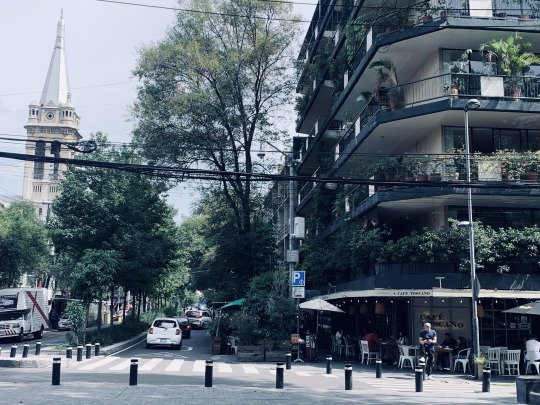
An interesting irony is that people like to think that travel changes them, helping them learn and grow. A lot of these digital nomads may travel to places like Tulum and learn a few words in Spanish (I see signs for Spanish lessons in English all the time around here), but many of them inevitably are hanging out with other foreigners and speaking English, French, or German. Sooner or later, they go back form whence they came. What permanently changes from tourism is not the travelers, but the places that get visited. "I knew it was time for me to find a new neighborhood to live in when the cashier at 711 addressed me in English," a Venezuelan who has lived in Mexico City for over ten years told me.
There is nothing wrong with wanting to live in a different country or have a fresh start. But these individuals are coming into Mexico without papers, usually not learning the language, bringing in US dollars that cause inflation and not paying taxes into the system they're living under. It strikes me a bit like elephants stomping around on the grass, not concerned with what happens to the ants under their feet. Personally I don't live in either Roma or Condesa, I have residency, and I work for a Mexican organization. I pay plenty of taxes. Maybe a few years ago I could have afforded to live in these neighborhoods, but certainly not now. Part of me, frankly, is jealous: I'd love to live on a beautiful street with picturesque parks and Greek statues. I can understand the impluse. The queasiness is a reflection, in part, of my own smaller complicity.
But it was a beautiful lazy Sunday, and maybe that was enough thinking about the bigger picture. It's so nice out, I decided to walk the good forty minutes home.

#Roma#Condesa#MexicoCity#CDMX#travel#travelgram#travel photography#gentrification#digitalnomads#citylife#streetphotography#Michelangelo#StatueofDavid#Statue#Mexico
0 notes
Text
'Canción que quema', un documental de San Pascualito Rey

El domingo 30 de abril, el filme, dirigido por Yulene Olaizola, Rubén Imaz y Luis Flores Rábago, se proyectará en la Cineteca de Guadalajara
Después de varios años, la banda de rock mexicano San Pascualito Rey regresa a un estudio para grabar Todo Nos Trajo Hasta Hoy, el cuarto álbum de su discografía. Es una apuesta ambiciosa y el grupo está convencido de estar haciendo el mejor disco de su historia. Canción a canción, los seres humanos que integran esta banda exponen sus sueños y miedos, cayendo en fricciones creativas y estirando sus lazos al límite.
San Pascualito Rey, los creadores del sonido “dark guapachoso”, han puesto todo sobre la mesa y literalmente se han dejado la piel sobre el asfalto. La historia de este grupo resiste y perdura, aferrándose a lograr algo que parece imposible: vivir haciendo rock.
El domingo 30 de abril, en punto de las 20:00 horas, se presentará -en primicia internacional- el documental sobre el grupo de rock mexicano San Pascualito Rey, en la sala Guillermo del Toro de la Cineteca de Guadalajara, dentro del marco de la primera edición del festival In-Edit México.
El documental fue dirigido por los laureados cineastas Yulene Olaizola, Rubén Imaz y Luis Flores Rábago, quienes acompañaron a San Pascualito Rey a lo largo de varios años y se acercaron a la intimidad del grupo durante las grabaciones de un álbum de estudio y algunos conciertos. El documental tiene imágenes de conciertos de SPR en sitios emblemáticos como el Teatro Metropólitan y el extinto Plaza Condesa.
La película es una producción de malacosaCINE y llegará al In-Edit salida del horno. El equipo de la película acaba de terminar la mezcla de sonido en las instalaciones de Astro LX, a manos de los ingenieros Michelle Couttolenc y Jaime Baksht, ganadores del Oscar y el BAFTA por su labor en The Sound of Metal y con una galardonada trayectoria.
Mientras el grupo de rock San Pascualito Rey produce su disco más ambicioso, los problemas internos condicionan la grabación y ponen en jaque la historia de la banda.
“En 2016, San Pascualito Rey grabó el disco de estudio Todo Nos Trajo Hasta Hoy. Por invitación del grupo, asistimos a esas sesiones e hicimos nuestra propia grabación. Con un esquema de varias cámaras y canales de sonido, capturamos el difícil proceso de hacer un disco de rock. “Aprovechando el momento, los acompañamos en presentaciones en vivo y logramos acercarnos a la intimidad de la banda. Nos embarcamos, así, en un largo camino para crear una película musical que pudiera dimensionar a San Pascualito Rey en el panorama rockero, pero que, sobre todo, nos contara la historia de un grupo que lucha por seguir el viejo sueño de la música”, explican los directores.
Read the full article
0 notes
Text
SHAWN MENDES VISITED CDMX!!!
Shawn mendes alarmed all his fans when he announced that he would cancel his world tour due to mental health issues, but during his free time he had been working with clothing brand tommy hilfiger on a sustainable and visually beautiful collection.
In the middle of the month of march of 2023 the 4 cities that he would visit to present the spring-summer collection were announced and within them was Mexico. The dynamic they were working on was to make a post on instagram where they posted the location of the place where shawn would be.
On March 27 was shawn's date in Mexico and it was posted a day earlier that it would be in artz pedregal, a plaza with luxuries and early Monday morning there was already a line of shawn fans hoping to have a good place to see him when he showed up in the store. The appointment was 3:30pm and shawn showed up at 5:30pm although he was already there receiving visits from special guests.
Finally the audience was delighted to see the reaction of the singer when he saw the crowd of people there, waiting only to see him, as there was no way in the aisles of the mall, everything was stuck and shawn, seeing everyone, kept holding his heart and thanking him for being there.
Shawn Shared time with Mexican influencers at the dinner in his honor by clothing brand tommy hilfiger and it was very nice for everyone, he is a very handsome man who I had the opportunity to see in the distance and we expect his return to music soon to visit us again, he also shared his desire to buy a house in colonia la condesa because he liked the vibe that gives that place but.. What would you do if you saw shawn mendes in your neighborhood???






0 notes
Text
12 de agosto de 1945: Jesús Guerra “Guerrita” sufre una grave cornada en Madrid
Álvarez Pelayo, Guerrita y Rafael LlorenteMadrid, 19 de abril de 1945Archivo: Martín Santos YuberoJesús Guerra Guerrita, originario dela Ciudad de México, era conocido en las plazas de la capital mexicana desde el 22 de mayo de 1938, cuando se presentó en El Toreo de la Condesa para lidiar un encierro de La Laguna alternando con Jesús González El Indio y Emiliano Vega. Fue uno de los novilleros…
0 notes

